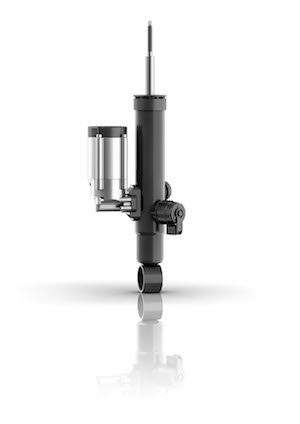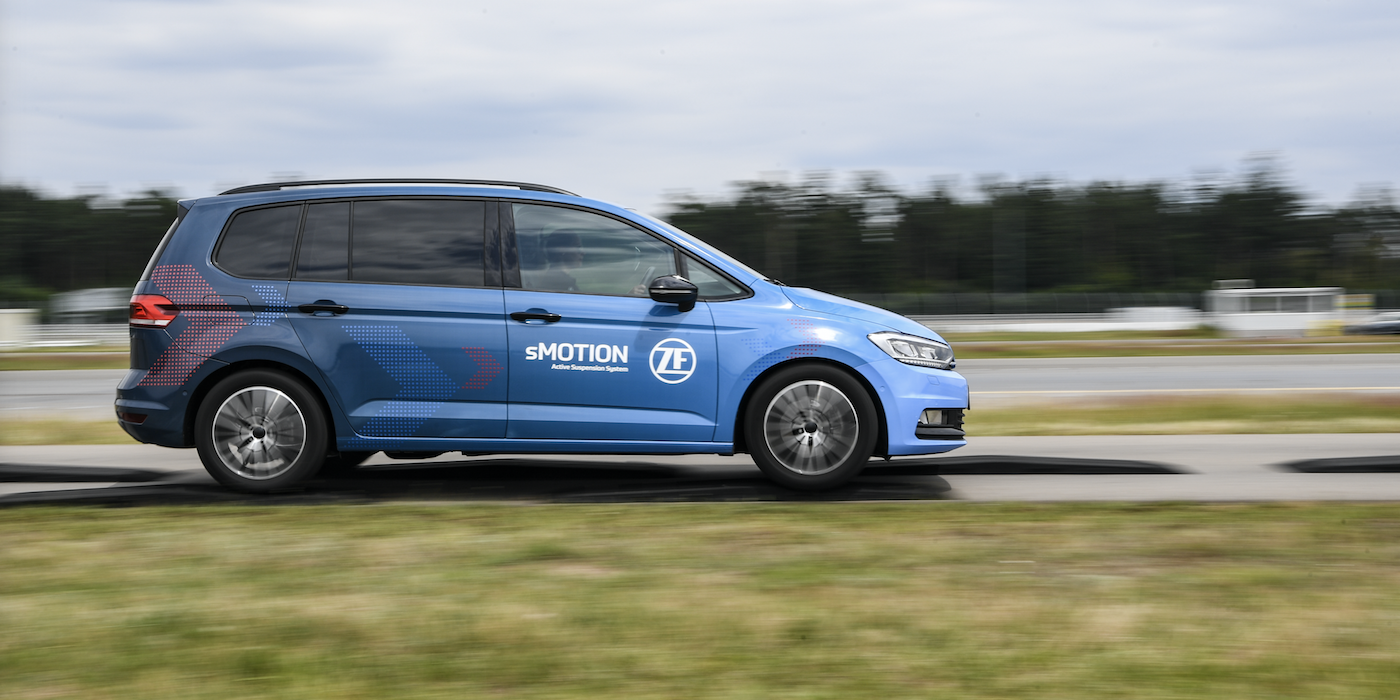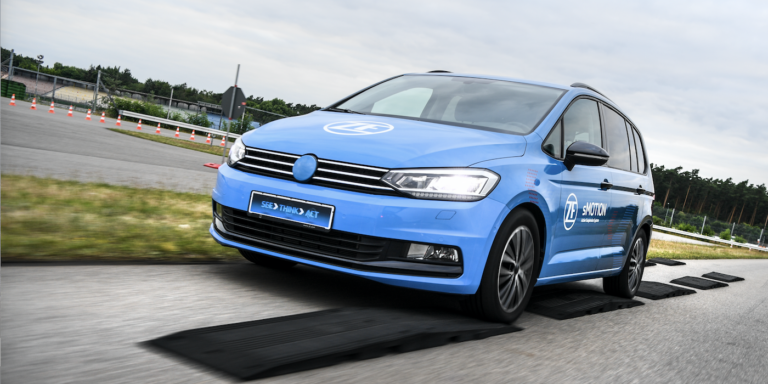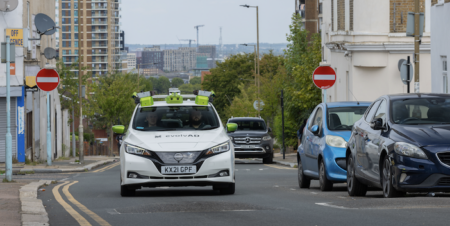Unwanted car body movements caused by the driver negotiating potholes, bumps or bends can be detrimental to passenger comfort, but ZF believes it has developed a solution. Named sMotion, the fully active chassis system features an external electric- motor pump unit with integrated electronics, a compact unit which works as a bi-directional actuator on each wheel. This actuator can actively raise and lower the piston rod on each wheel individually, a function that ZF claims is unique in the automotive sector.
This technology enables control over low-frequency car body movement. When cornering or changing lanes, for example, the car would remain virtually horizontal as the system retracts the two inner wheels and extends the outer wheels to counteract the angle. The same approach benefits vehicle occupants traveling along long stretches of bumpy roads, according to ZF, even if the roads have different characteristics on the left and right or occur only on one side. The system is also claimed to be effective against forward or backward pitching during deceleration and acceleration.
This is only half the story though, as while the sMotion system is intended to react swiftly and effectively to ride disturbances, if it is networked with environmental sensors such as cameras, the system can also be proactive. If sensors connected with the system detect changes in road conditions ahead, such as potholes, the system can prepare the actuators so that the affected wheels can be kept at the height of the road surface instead of allowing them to drop, as would be the case with a conventional damper.

sMotion also features a second unique technology: a separate hydraulic control path. This feature compensates for higher-frequency bumps caused by minor unevenness in the road surface, such as manhole covers, transverse joints, rough asphalt or gravel.
Further innovation comes in the sensor and networking technology options for the system. Vertical dynamic data from the dampers can be transferred to the Cloud, from where data relating to road conditions can be transmitted to vehicles approaching the road disturbance, and data relating to suspected road damage transmitted to infrastructure authorities.
The increasing importance of ride comfort
Every driver and passenger wants optimal ride comfort, but as highly automated and autonomous driving grows in importance, so will ride comfort. Body control is also more important, as passengers in autonomous vehicles will not be paying as much attention to the road, which can lead to car body movements causing motion sickness in some people. Eliminating this movement will make the autonomous experience much more enjoyable.

“When it comes to the development of highly automated and autonomous driving, the chassis plays a key role,” stated Dr Holger Klein, head of the car chassis technology division at ZF. “By the time the autopilot takes over the wheel, all passengers want to be completely relaxed and unaware of the vehicle’s movement, regardless of what is happening on the road. Our sMotion fully active chassis system can help fulfil this desire.”





